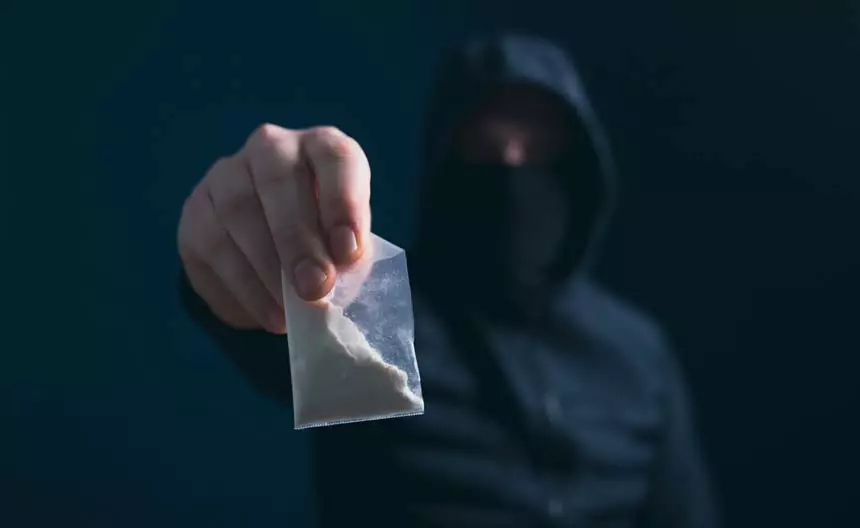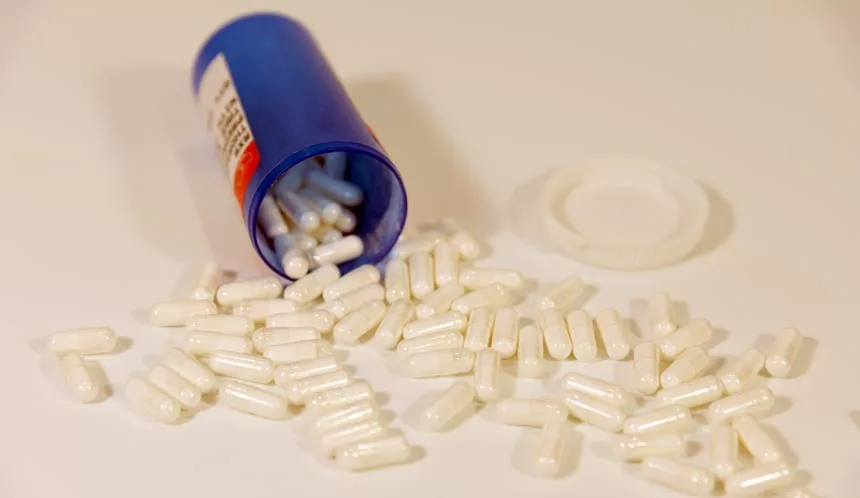Finding the Right Fentanyl Treatment Facility
Table of Contents
- Finding the Right Fentanyl Treatment Facility
- What is Fentanyl?
- What are the Effects of Fentanyl over the Long Term?
- The Rise of Fentanyl Addiction in the United States
- A Sampling of Fentanyl Addiction Treatment Statistics
- What are the Symptoms of Fentanyl Withdrawal?
- Treating Fentanyl Withdrawal Effectively
- The Importance of Detox for Opioid Treatment
- Fentanyl Detox as a Component of Effective Treatment
- Medication-Assisted Treatment (MAT) and Opioids
- What Medications Are Used During Fentanyl Treatment?
- The Complexity of Addiction to Synthetic Opioids
- What are the Types of Fentanyl Rehab Programs?
- Behavioral Therapies in Fentanyl Addiction Treatment
- Freedom from Fentanyl Addiction: Found Here
- Medically Reviewed By
Fentanyl is a kind of opioid that is notorious for the incredible strength of its effects. Because of this, fentanyl has a significant potential for misuse and addiction. It poses a significant danger in the form of fatal overdoses because of its extreme potency. By participating in a fentanyl addiction treatment program, you will be able to prevent these major consequences.
Fentanyl addiction treatment centers use a wide variety of therapy modalities to assist clients in regaining their sobriety and avoiding future drug use.
Keep reading to find out more about fentanyl rehab treatment centers, and how Find Addiction Rehabs can help you locate a top treatment provider now!
What is Fentanyl?
Fentanyl is a potent synthetic opioid prescribed to treat severe chronic pain. Fentanyl is often sought out as it has a high potency and quick onset of effects, such as feelings of pleasure. But, these same drug properties are also what is likely to increase addiction and overdose risks, not to mention painful physical and psychological withdrawal symptoms.
With the DEA reporting a dramatic rise of counterfeit prescription opioids containing fentanyl in the illicit drug market, now more than ever it is important to treat this addiction effectively in fentanyl recovery rehab centers.
Prescription Fentanyl is a strong opioid pain medication, sometimes used as a cancer treatment for those struggling with severe pain. It is a man-made drug that is similar to morphine, but it’s much more powerful. The substance use disorder of fentanyl addiction does not only affect cancer patients or those who need a way to treat pain, but others who may be taking opioid medications as a way to self-medicate for co-occurring mental illnesses.
Fentanyl is sold on the street as heroin or other drugs, but it’s much more potent. Taking just a small amount can be deadly, so users don’t know exactly how much they’re taking. Users obtain Fentanyl in many forms, including a Fentanyl patch that releases the drug over time through the skin.
What are the Effects of Fentanyl over the Long Term?
This dangerous drug has been around since the 1960s but was rarely used until recently. In fact, it wasn’t even approved by the U.S. Food and Drug Administration (FDA) until the mid-1990s.
Since then, it has become one of the most commonly prescribed prescription drugs for pain relief and the management of painful symptoms in America because it is much less expensive than other drugs like morphine or oxycodone, which are also used to treat severe pain after surgeries or injuries like car accidents or falls from heights.
Fentanyl’s popularity comes at a cost: It can be very dangerous if not properly managed by medical professionals who understand how to dose it properly for patients with specific conditions. All controlled substances should be considered dangerous drugs that require careful, considered management.
Is Fentanyl Addictive?
Fentanyl is the most hazardous controlled narcotic that can be acquired. It is 50 times stronger than heroin and 100 times stronger than morphine. The chemical is to blame for the alarming spike in the number of overdose deaths in the United States.
Fentanyl dependency is based on the chemical and biological factors that contribute to the drug’s effectiveness in relieving agonizing pain. Fentanyl’s ability to increase endorphin production is what gives it its medicinal and recreational effects.
The Rise of Fentanyl Addiction in the United States
Fentanyl use, like other opioids, should be done with caution to manage pain as the risks associated with its use are many. Since Fentanyl misuse is so powerful, one dose can be lethal if administered incorrectly or accidentally mixed with other drugs like alcohol or other opioids.
It is important to understand that long-term Fentanyl use can be very dangerous to your body. This is because fentanyl is a strong opioid and has been linked to numerous deaths. In fact, we have already seen an increase in the number of fatalities due to Fentanyl overdose deaths. In addition, there are many other negative effects of long-term Fentanyl use that you should know about. Some of these include:
Addictive Potential
The risk factors for anyone struggling with a substance use disorder are many. The physical dependence on this substance is one thing. They can struggle with mental illness that can manifest in a variety of forms; depression or anxiety to name a few. Aside from this, they are more likely to engage in risky behaviors that put their physical well-being in jeopardy.
Damage to the Brain
Fentanyl can cause damage to the brain which can lead to permanent changes in your mental health or even death. This is why it is so important that you seek medical attention as soon as possible if you suspect that you may be suffering from drug addiction.
Heart Problems
Excessive fentanyl use can cause heart problems such as hypertension and tachycardia (irregular heartbeat). These conditions are serious, can cause intense pain, and require immediate medical attention if they go unchecked for any length of time.
Liver Damage
Long-term fentanyl use can also result in liver damage over time which may lead to further complications down the line such as liver failure or even death if not treated properly by a physician immediately after exposure.
A Sampling of Fentanyl Addiction Treatment Statistics
About 2.6 million Americans sought treatment for addictions in 2009 at a treatment facility. While this may sound like a lot, sadly it is not given that approximately 23.5 million people in the US are addicted to drugs or alcohol, including prescribed Fentanyl, and in need of support for it. This leaves about 90 percent of addicts that did not receive professional treatment for their issues.
And while fentanyl was once found to be prescribed for breakthrough pain in the form of transdermal patches, fentanyl nasal spray, or even lollipops (under the brand name Actiq) it has now fully invaded our country. Drug dealers across America have begun using the drug, not only to strengthen heroin but also to produce counterfeit prescriptions (known as ‘fentapills’) and even to adulterate cocaine. This has resulted in record overdose deaths.
There are often several reasons a person might not enter a Fentanyl addiction rehab facility or treatment center, for another type of drug addiction. For example, they may not be ready to stop the Fentanyl abuse or fear the negative opinions of others.
What are the Symptoms of Fentanyl Withdrawal?
Fentanyl withdrawal is an uncomfortable and often painful process that can leave you feeling weak, nauseous, and ill. The symptoms of Fentanyl withdrawal can be very difficult, and some of them can be life-threatening. The severe symptoms that you will experience when you stop using Fentanyl are different in every case.
This is because every person has a different tolerance level, which means that some people will need more than others to feel the effects.
When you stop using fentanyl, you may experience some or all of these symptoms:
- Sleeplessness
- Insomnia
- Anxiety
- Irritability
- Depression
- Muscle cramps
- Body aches
- Nausea and vomiting
Treating Fentanyl Withdrawal Effectively
The next logical question is whether a fentanyl rehab recovery center is effective in treating this particular addiction. The reality is that if an opioid addict abruptly stops using a substance after long-term use, acute withdrawal symptoms can occur due to physiologic changes during substance use.
Thus, rather than pursuing at-home detox to treat fentanyl withdrawal, it is safer to detox with medical supervision at a fentanyl rehab recovery center. Medical detox and addiction treatment centers have doctors with specific training on opioids that are authorized to give opioid addicts certain medications to help them shift toward a clean lifestyle.
The Importance of Detox for Opioid Treatment
Detoxing is important. In fact, when it comes to the recovery process, the requirement for Fentanyl users to be able to detox safely is the absolute first step and start of the treatment for Fentanyl addiction. This is not just true for Fentanyl abuse but that of other drugs as well.
Over time, as one uses Fentanyl, the body develops a physical dependence on the substance. This adjusts the body’s baseline for what it expects will be provided to it chemically. Thus, when one stops substance abuse, the body will initially rebel.
It won’t know what is happening or why and will go through an incredibly difficult period of withdrawal symptoms. This is why detox is the first step. No other steps of recovery can take place until the person has made it safely to the other side of detox.
There are several substances used to temper the strength of the withdrawal symptoms during withdrawal as valid treatment options. These medications, known commonly as addiction medicine, such as methadone and buprenorphine, are safer and less addictive than fentanyl.
Over time, medical professionals reduce the dose to enable the person to adjust to no longer having the drug in their body. Medically supervised withdrawal provides those who seek recovery with comfort from their withdrawal symptoms at accredited treatment locations, that otherwise may be very painful if detoxing at home.
Plus, if drug cravings occur during recovery at a fentanyl rehab recovery center, a person has a support system around them to help them avoid relapse, which they may not have at home.
Not only that, but if the person were to relapse and used the same amount they did before detox, the result may be fatal as they no longer have the same tolerance, so it is beneficial to be in treatment programs.
Fentanyl Detox as a Component of Effective Treatment
Detoxication Treatment for Fentanyl
The first step towards fentanyl rehab is detoxification. This is because it eliminates all the remnants of fentanyl from the body. Fentanyl detox enables clients to be weaned off fentanyl while also removing it from their system. This stage of addiction therapy often lasts between four to ten days.
Clients undergoing detox may encounter fentanyl withdrawal symptoms throughout the process. As a potent opioid, fentanyl affects one’s system, making detoxification challenging.
Evaluation & Rehabilitation for Opioid Use Disorders
At this stage, a healthcare professional at one of our partner fentanyl addiction rehab will evaluate the client. This is with the intention to uncover the reasons behind the client’s fentanyl abuse as well as the client’s physical and mental health problems. With this, they can also determine the most effective drug abuse treatment.
Therapy for Opioid Misuse
After the evaluation and the detoxification procedure, the client will begin the appropriate fentanyl addiction treatment. The time spent participating in the fentanyl treatment program might range from 30 to 180 days. Based on the level of opioid consumed by the client, the treatment provider or center may also propose a more comprehensive treatment approach. This therapy will ensure that the client struggling with fentanyl addiction gets all the help and attention needed for a full recovery.
Medication-Assisted Treatment (MAT) and Opioids
Effective rehabilitation programs often use medication to help clients of overcome their addictions. MAT is the common term that addiction treatment providers use to refer to this therapy. All-encompassing and holistic support is provided to the client through MAT. This is accomplished by facilitating your recovery through both medicine and counseling.
In a medication-Assisted Treatment program, the medication is administered to:
- Reverse some of the changes in the brain that are responsible for addiction
- Reduce your desire for fentanyl, which will help you avoid falling back into old habits of fentanyl use.
- Prevent subsequent fentanyl intakes from causing its typical pharmacological effects
- Discourage you from engaging in habits that contribute to addiction
- Assist you in cultivating new behaviors that contribute to your recovery
- Give you real-world coping techniques that will make it simpler for you to avoid using drugs in the future.
- Make sure you take advantage of your peers’ support and the therapy offered formally.
What Medications Are Used During Fentanyl Treatment?
Most clinics that treat addiction to fentanyl and other opioids use medication-assisted therapy (MAT) and other behavioral treatments. Medication-assisted treatment is the most successful approach in assisting those addicted to fentanyl and other opioids in achieving and maintaining sobriety. As part of a MAT program to treat opioid dependence, the following medications are often suggested.
Methadone
Methadone is a complete opioid agonist that stimulates opioid receptors in the brain. As a result, withdrawal symptoms and cravings are reduced with methadone, which is accomplished without the fentanyl-like surge that occurs with fentanyl use.
Buprenorphine
This is a partial opioid agonist that excites the opioid receptors to a lower amount than a complete opioid agonist, such as methadone. Buprenorphine, also known as Subutex, is another name for buprenorphine. This medication reduces the chance of being euphoric or sedated.
Suboxone
This a combination medication that contains the opioid agonists buprenorphine and naloxone, known by the brand name Suboxone. Naloxone is the opioid agonist often used to reverse the symptoms of opioid overdose. Naloxone has a strong affinity for opioid receptors in the brain and body. Thus, preventing other medicines from having any effect.
Naltrexone
This is an opioid antagonist that inhibits the effects of opioids on the brain. This prevents the user from feeling high and, as a result, alleviates cravings and lowers the motivation to use opioids.
Clonidine
Although it does not assist lessen cravings, clonidine helps relieve withdrawal symptoms, such as anxiety, agitation
Clonidine doesn’t help reduce cravings, but it does ease withdrawal symptoms like anxiety, agitation, muscle pains, sweating, runny nose, and cramps. Clonidine doesn’t make people less likely to want to use drugs.
As the client gets closer to the end of fentanyl detox, the team at the addiction clinic will work with them to create an aftercare plan. This is the treatment for drug abuse that continues after a person finishes their rehab program.
For instance, many people getting over fentanyl abuse join support groups or group therapy. Some people might feel better once a week if they meet with a counselor. Some examples of aftercare activities you may be required to do is build a strong network of friends and family, find fun hobbies, and stay active.
The Complexity of Addiction to Synthetic Opioids
Addiction to fentanyl or another drug is more than just about compulsive drug taking. It impacts the health and social life of the addict. Drug addiction can increase the risks of physical and psychological diseases, due to the toxic effects of the drugs, as well as disrupt the addict’s life in numerous sectors, from career and relationships with family members to their experience with the wider community.
With that being said, the exact effects of opiate addiction on the individual as well as the nature of their addiction are unique. Often, there are co-occurring disorders that are affecting the patient in addition to the fentanyl addiction.
Thus, a custom treatment plan is best for the addict, based on their needs and wants. Fentanyl addiction treatment professionals offer insight to help the person who is struggling with the addiction to choose the best treatment option for them from those available.
What are the Types of Fentanyl Rehab Programs?
After detox, which is geared toward treating withdrawal, the next part of the rehab process is typically long-term addiction treatment focusing on emotional and psychological healing. The addiction treatment program the individual chooses can be inpatient or outpatient.
The inpatient format, which refers to staying at a fentanyl rehab recovery center 24/7 to fully focus on recovery, may not be doable for a person who, for example, has family or career obligations and cannot put their life on hold temporarily. The alternative is an outpatient rehab program that enables the individual to live at home and attend treatment for a certain number of hours a week, while still allowing them to go to work and other places.
During the inpatient or outpatient programs, the recovering addict will undergo therapy, which can be individual therapy sessions, group sessions, or both. The therapy addresses individual factors that led the person to abuse the substance in the first place and seeks to prevent relapse by addressing cravings and behaviors that are not useful.
By the time the fentanyl rehab program is complete, the person has knowledge about addiction as a disease and has the tools to succeed without returning to drug use.
Behavioral Therapies in Fentanyl Addiction Treatment
Behavioral therapies are important components of treatment for people with Fentanyl addiction. Behavioral therapies can help people recognize their triggers for substance abuse and avoid them when possible as well as teach them how to cope with difficult emotions without turning to drugs or alcohol for relief.
Cognitive Behavioral Therapy (CBT) is one of the most common treatment programs in terms of therapy used at a high-quality treatment facility. CBT helps people change negative thought patterns about themselves, their relationships, and their lives in general. This can be helpful in preventing relapses or returning to old habits when feeling stressed or anxious.
Aftercare programs are often also available at a fentanyl recovery rehab center to support people as they return to their homes, work, or school and learn to adjust to this new clean lifestyle.
Continuing Support Following Fentanyl Addiction Rehab
One of the most important aspects of addiction recovery is support. Support groups provide a place for people to gather, share their struggles and find strength in numbers. Support groups can be a great resource for anyone who wants to get sober from alcohol and drug addiction. They offer a place where you can share your experiences with other people who have been through similar situations and understand what you are going through.
The main purpose of these groups is to help people in recovery find long-term sobriety and learn how not to relapse into their old habits. Some groups focus on recovery from drug or alcohol addiction while others address both simultaneously or focus on gambling or eating disorders instead. You may also find support groups that address specific issues related to your addiction such as stress management or anger management issues.
When you attend a support group meeting, you will meet with other people who are in recovery so they know exactly what you’re going through right now — because they’ve been there too! It’s an incredible experience when you realize that someone else understands exactly what your experience is. Feeling seen and understood is critical to lasting recovery.
Freedom from Fentanyl Addiction: Found Here
If you think that you or someone you care about might have a fentanyl addiction, call now to inquire about the quality treatment options available.
At Find Addiction Rehabs, we are here to help you get the help you need. You can start on a path to a happier life without drugs today, so please reach out now!
Rachael Goldstein has been a freelance writer for more than 10 years, having written for Find Addiction Rehabs for the past two years. She specializes in writing about the law, mental health, psychology, and addiction. She is the owner and author of the website www.addicted-to-sobriety.com. Rachael is also a licensed attorney in the state of Pennsylvania.









